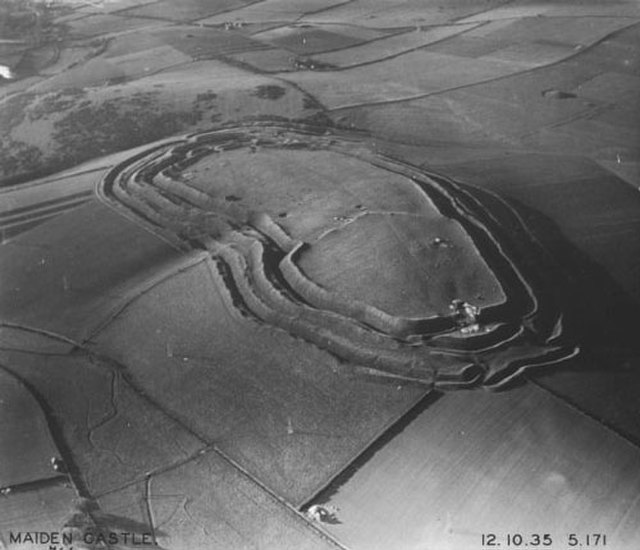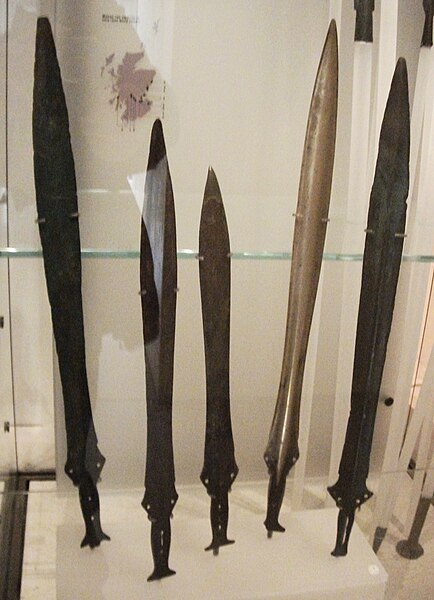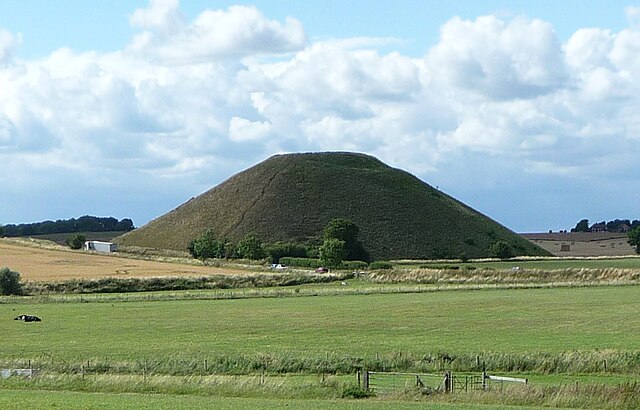The British Iron Age is a conventional name used in the archaeology of Great Britain, referring to the prehistoric and protohistoric phases of the Iron Age culture of the main island and the smaller islands, typically excluding prehistoric Ireland, which had an independent Iron Age culture of its own.
The Iron Age is not an archaeological horizon of common artefacts but is rather a locally-diverse cultural phase.
The Battersea Shield, c. 350–50 BC
Maiden Castle, Dorset, is one of the largest hill forts in Europe.
View of the ramparts of the hillfort of Maiden Castle, 450 BC
Iron Age roundhouse, reconstruction
Bronze Age Britain is an era of British history that spanned from c. 2500–2000 BC until c. 800 BC. Lasting for approximately 1,700 years, it was preceded by the era of Neolithic Britain and was in turn followed by the period of Iron Age Britain. Being categorised as the Bronze Age, it was marked by the use of copper and then bronze by the prehistoric Britons, who used such metals to fashion tools. Great Britain in the Bronze Age also saw the widespread adoption of agriculture.
Bronze swords found in Scotland
Stonehenge ruins
Silbury Hill, c. 2400 BC
Bush Barrow gold lozenge, c. 1900 BC.








